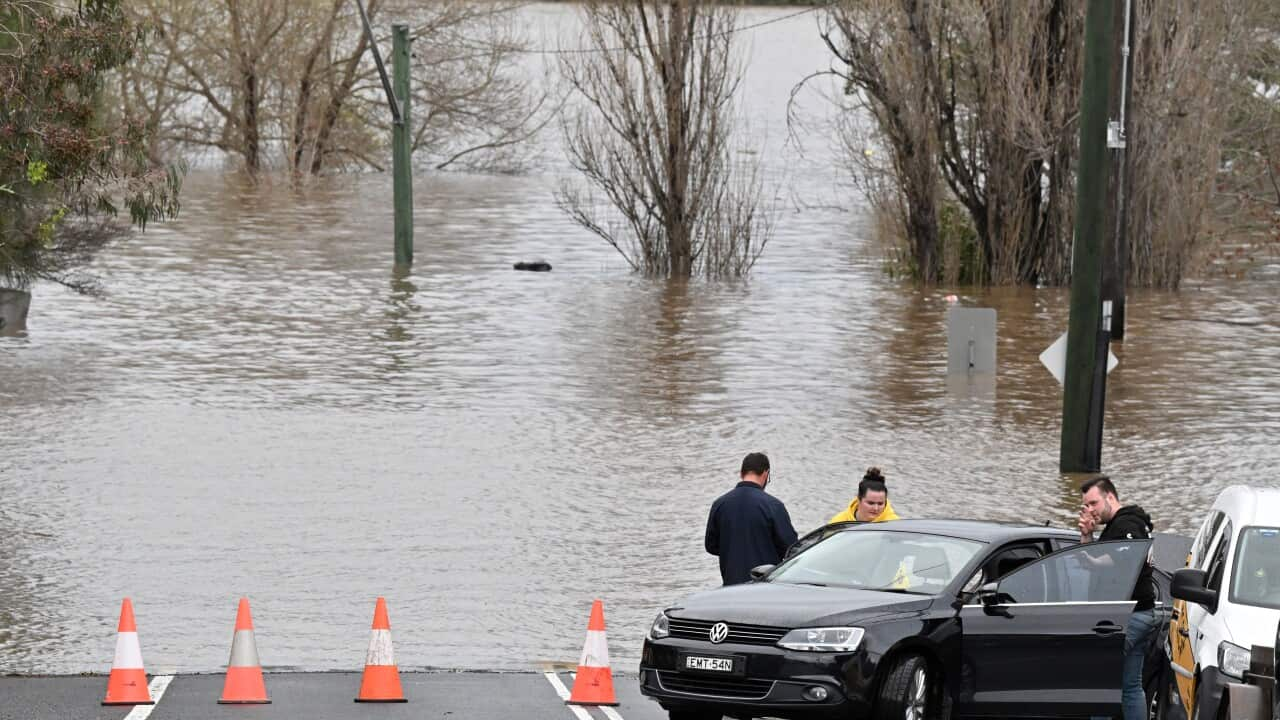The federal government is considering whether to offer further relief payments to people affected by the floods in NSW.
While the federal and NSW state governments have offered joint disaster assistance to 23 local government areas impacted by the floods, talks are under way on extending further payments to victims.
Emergency Services Minister Murray Watt said while specific payments had not been approved, the Commonwealth would make sure assistance was provided quickly.
"(A disaster recovery payment) is something that we are giving consideration to - I'm still waiting on that (advice) from my agencies," he told reporters in Canberra on Tuesday.
"We have already announced a wide range of support for people, but I think it's fair to assume that there will be more coming."
It comes ahead of Prime Minister Anthony Albanese visiting flood-affected areas on Wednesday, alongside NSW Premier Dominic Perrottet.
The visit will come off the back , including .
Mr Albanese said the flood disaster was far from over and pledged the Commonwealth would supply whatever was needed to NSW to assist in the crisis.
While the federal government has helped with disaster payments and provided 250 defence personnel, a national emergency has yet to be declared.
"We take advice on those issues appropriately and we will continue to take advice," Mr Albanese told reporters in Perth on Tuesday.
"The cabinet was briefed just this morning on those issues."
Senator Watt said the national emergency had not been declared due to it not reaching a high enough level of severity.
"To declare a national emergency, you need to reach a certain threshold, which is essentially that the damage has reached a nationally significant level or that commonwealth interests are significantly affected," he said.
"The advice to me is while this is a severe disaster, it hasn't reached that level of national significance, but people should feel confident that we will still provide all of the usual support."
The Commonwealth accepted a request to provide an extra 50 ADF personnel to assist with disaster efforts.
Of those 250, 100 are on the ground with a further 100 on standby, while 50 will be used to help clean-up efforts.
Two helicopters have also been provided to assist in flood rescues.
The floods are the fourth time in the past 18 months that areas of Sydney and NSW have been inundated.
The prime minister said the Commonwealth would work with the NSW government on solutions to prevent future flooding.
"The concern at the moment is getting through the existing crisis," he said.
NSW Premier Dominic Perrottet said the response from the Commonwealth had been stronger during the current flood crisis compared with similar disasters earlier this year.
"We've learnt a lot ... there's no doubt in my mind ... that in terms of immediate response and the co-ordination with the commonwealth government it has been very strong," he told reporters on Tuesday.
The previous coalition government was criticised over its response to the NSW flooding earlier this year, including the speed of federal financial support and ADF personnel.
Treasurer Jim Chalmers said the floods would also lead to further pressures on supply chains and food prices.
"Our expectations is that these floods will make the costs of some essential fruit and vegetables even more expensive at a time when the price for those essentials are already skyrocketing," he said.
"We're talking about some really important food-producing parts of Australia."
50,000 people given evacuation orders
Severe weather continues battering NSW, with the Hunter region and Mid-North Coast next in line for a drenching as western Sydney endures widespread flooding.
About 50,000 people have been ordered or warned to evacuate, and major flood alerts are in place as rivers rise.
The weather system that drenched Sydney is expected to impact the Hunter region on Tuesday and the Mid-North Coast on Wednesday, where very isolated six-hourly totals could reach up to 125mm.
Rivers are rising in the Hunter, and major flooding is occurring at Bulga and Wollombi on the Wollombi Brook, with rain forecast to continue all week.
Evacuation orders have been issued for communities in Budgewoi and Tuggerah Lakes on the Central Coast, with an evacuation centre set up at The Entrance as a high tide is expected at midnight.
State Emergency Service Commissioner Carlene York said resources have been directed north, with backup requested from other states.
Major flooding continues along the Hawkesbury River at Windsor, Sackville, North Richmond and Wisemans Ferry to the northwest of Sydney.
Flood Recovery Minister Steph Cooke said about 400 people are in the state's nine evacuation centres, and 150 in emergency accommodation.
About 19,000 homes are without power after rising waters and damaging winds prompted energy companies to cut electricity.










